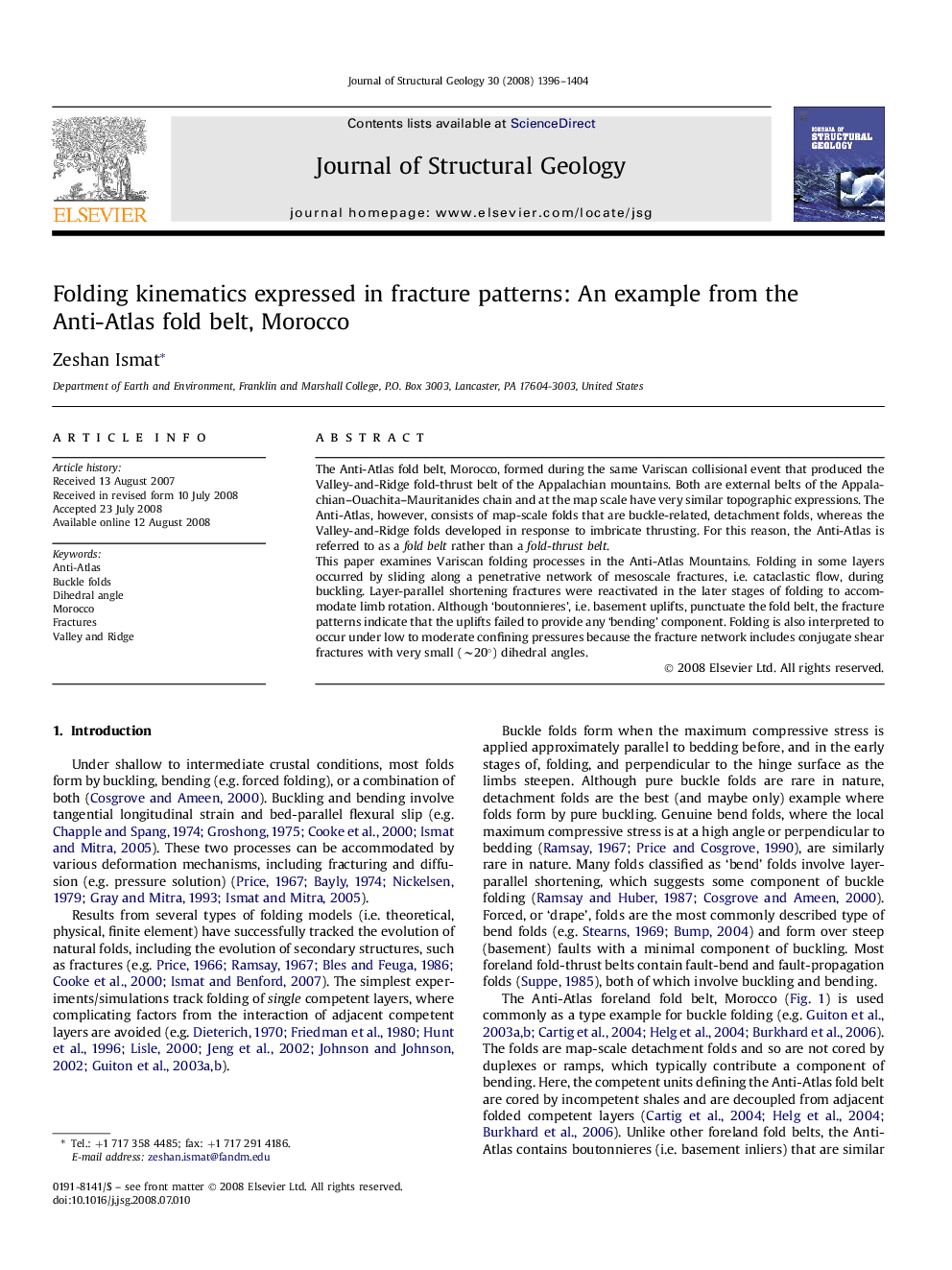| Article ID | Journal | Published Year | Pages | File Type |
|---|---|---|---|---|
| 4734021 | Journal of Structural Geology | 2008 | 9 Pages |
The Anti-Atlas fold belt, Morocco, formed during the same Variscan collisional event that produced the Valley-and-Ridge fold-thrust belt of the Appalachian mountains. Both are external belts of the Appalachian–Ouachita–Mauritanides chain and at the map scale have very similar topographic expressions. The Anti-Atlas, however, consists of map-scale folds that are buckle-related, detachment folds, whereas the Valley-and-Ridge folds developed in response to imbricate thrusting. For this reason, the Anti-Atlas is referred to as a fold belt rather than a fold-thrust belt.This paper examines Variscan folding processes in the Anti-Atlas Mountains. Folding in some layers occurred by sliding along a penetrative network of mesoscale fractures, i.e. cataclastic flow, during buckling. Layer-parallel shortening fractures were reactivated in the later stages of folding to accommodate limb rotation. Although ‘boutonnieres’, i.e. basement uplifts, punctuate the fold belt, the fracture patterns indicate that the uplifts failed to provide any ‘bending’ component. Folding is also interpreted to occur under low to moderate confining pressures because the fracture network includes conjugate shear fractures with very small (∼20°) dihedral angles.
